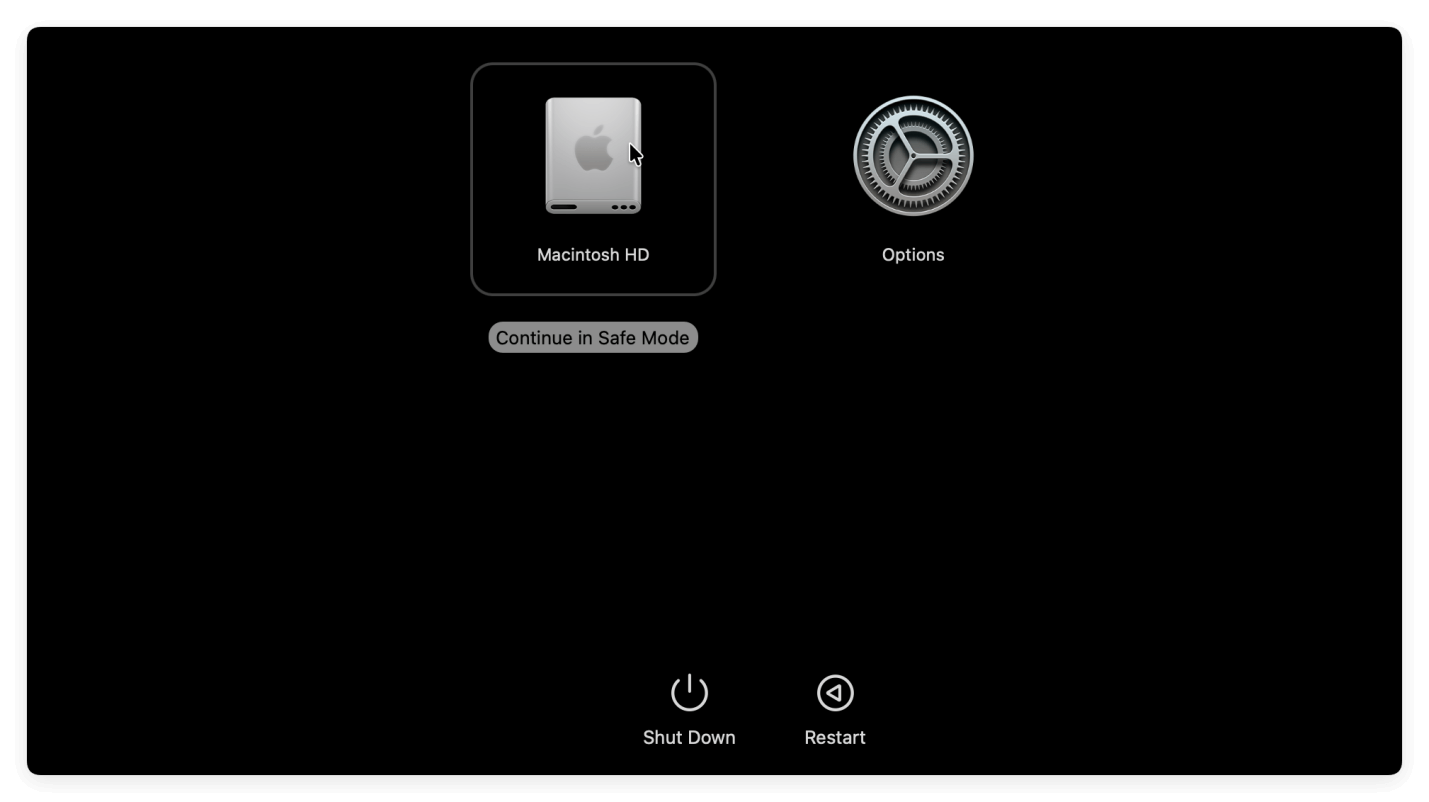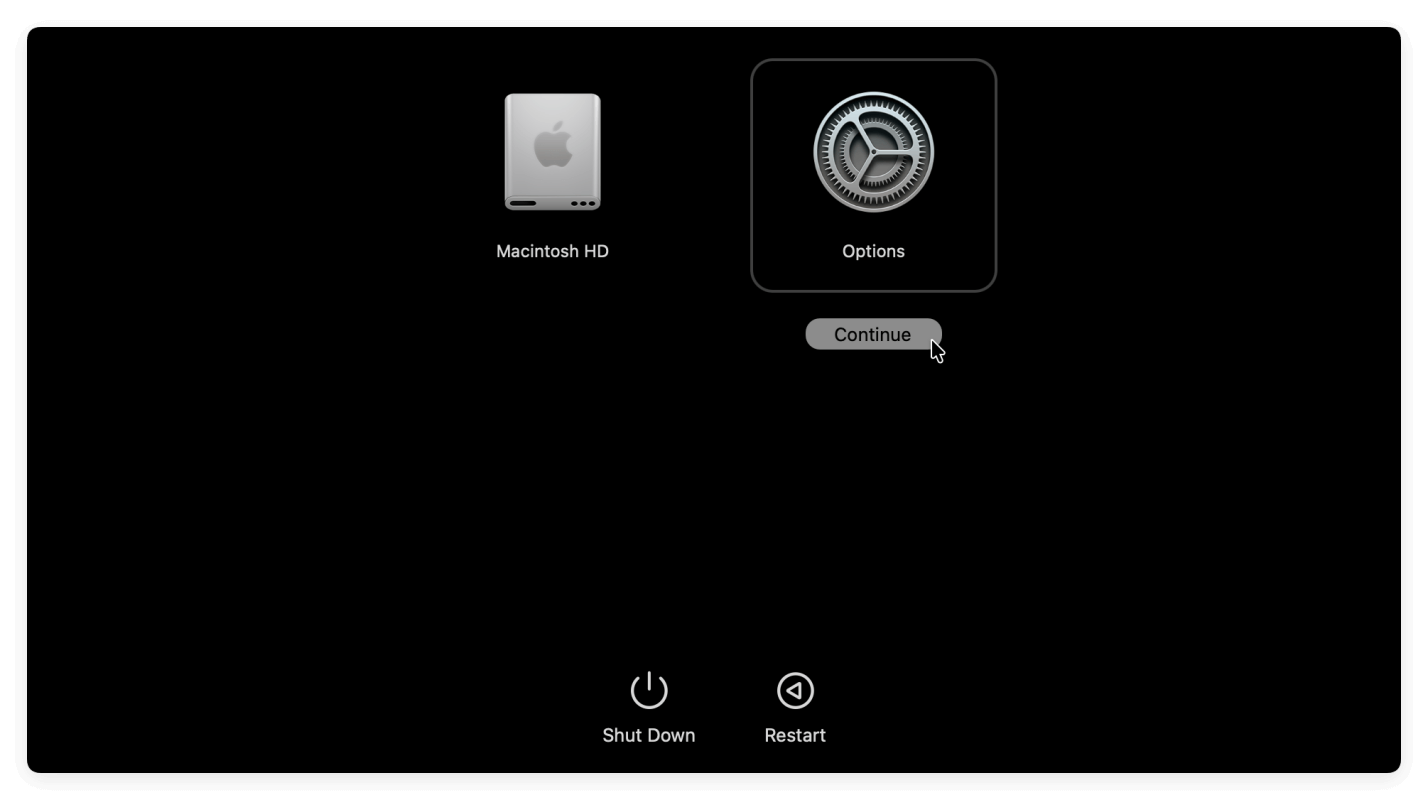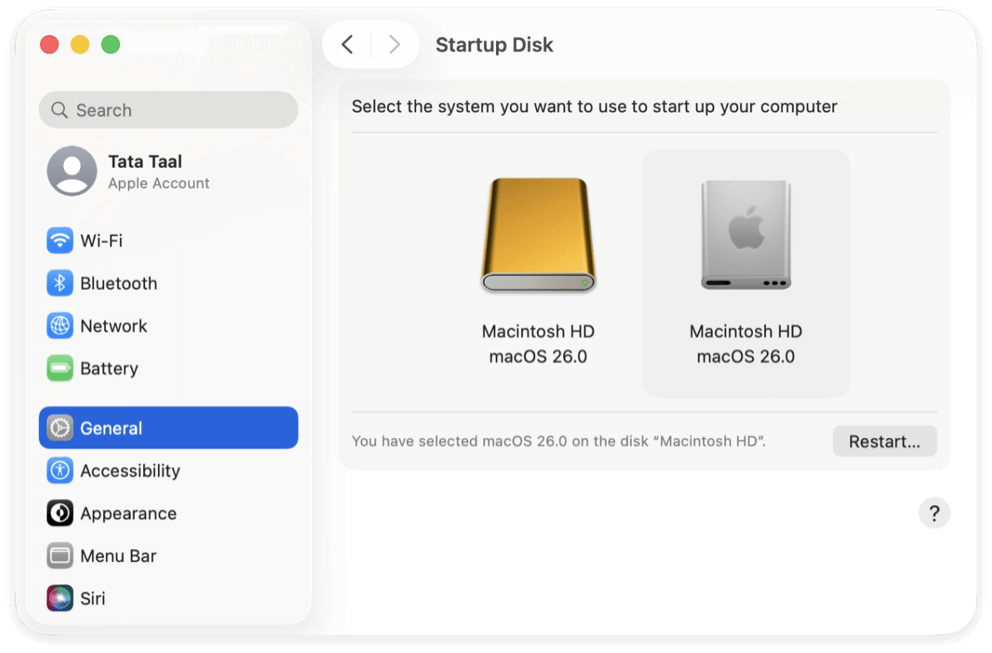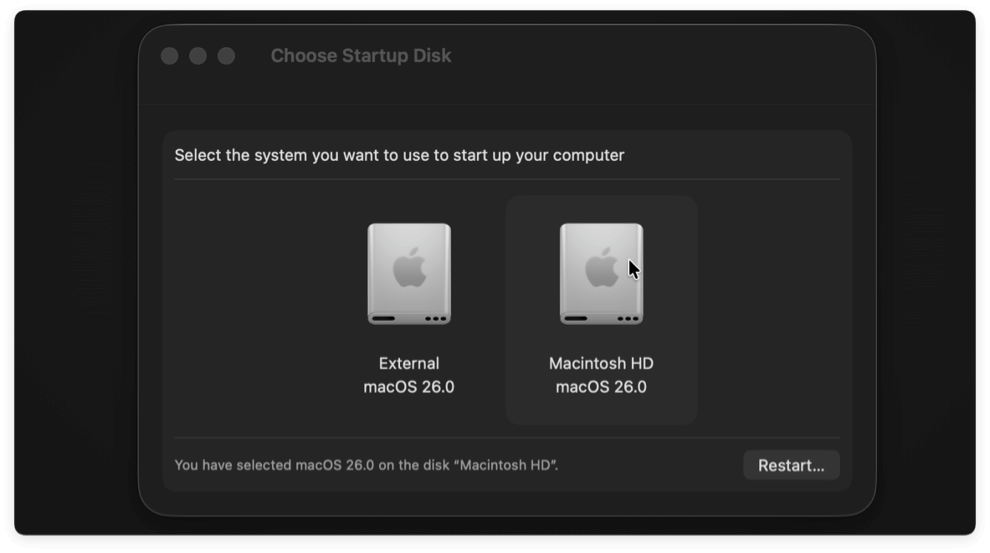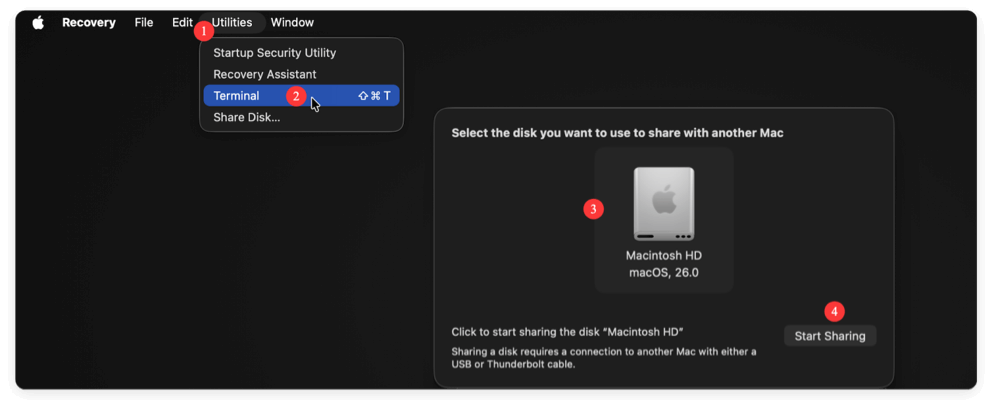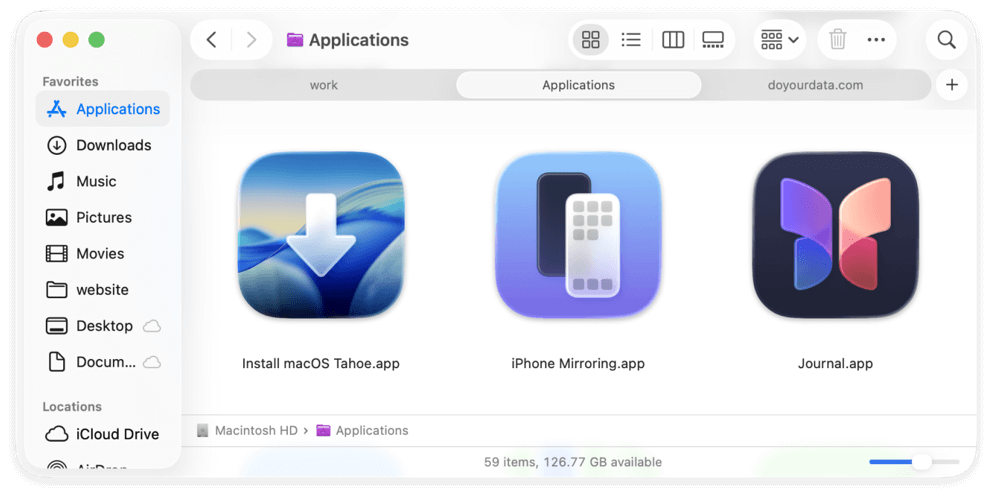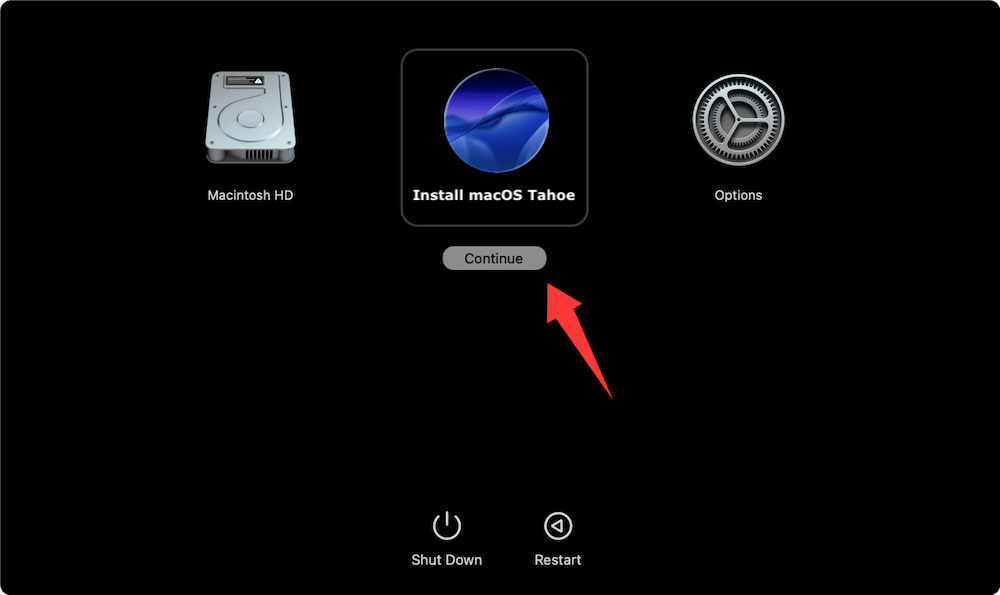Before we start: To avoid boot issues, data loss, or other problems before macOS Tahoe update, it's highly suggested to clone and make a bootable backup for your Mac. You can use the professional disk cloning software Donemax Disk Clone for Mac.
PAGE CONTENT:
macOS Tahoe, the latest operating system from Apple, comes with performance improvements, enhanced security features, and new design refinements. While many users experience smooth upgrades, some run into a frustrating issue: their Mac won't boot after macOS Tahoe update. Whether you're seeing a black screen, stuck Apple logo, or a never-ending loading bar, this guide will walk you through practical solutions to fix the problem and get your Mac running again.
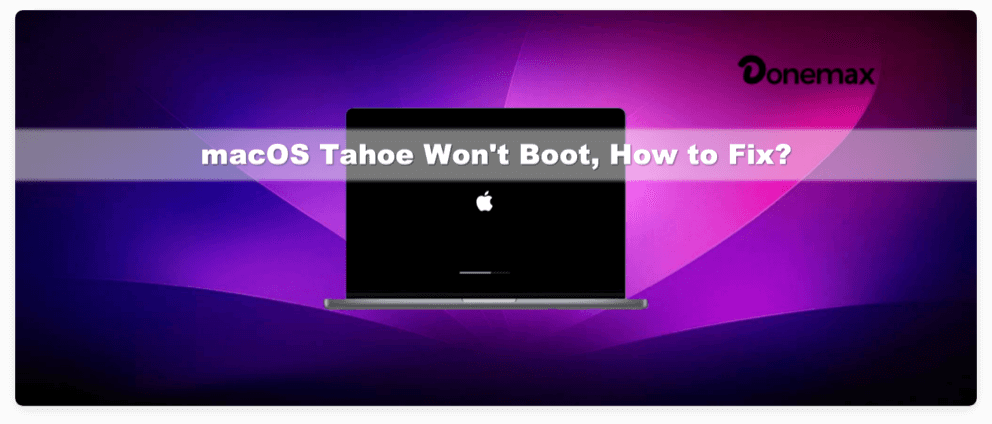
Common Causes of macOS Tahoe Not Booting
Before diving into fixes, it's important to understand why your Mac fails to start. Boot issues with macOS Tahoe usually stem from:
- Incomplete installation or corrupted update – A sudden shutdown or interrupted internet connection during the update can corrupt system files.
- Disk or file system errors – Problems with APFS (Apple File System) or bad sectors on the disk can prevent startup.
- Incompatible drivers or apps – Older apps or kernel extensions may conflict with Tahoe.
- Startup disk misconfiguration – If your Mac doesn't know which drive to boot from, it may stall.
- Hardware issues – RAM errors, failing SSDs, or damaged logic boards can also cause failures.
Knowing the cause helps you apply the right fix without unnecessary trial and error.
Preliminary Checks Before Advanced Fixes
Start with these quick checks before moving on to deeper troubleshooting:
- Power supply – Ensure your MacBook is charging or your iMac is plugged into a stable power source.
- Disconnect peripherals – External drives, hubs, or printers may conflict with boot. Remove all accessories and try again.
- Check for hardware damage – If your Mac recently suffered a drop or liquid exposure, hardware may be at fault.
If none of these help, move on to software-level troubleshooting.
Basic Fixes for macOS Tahoe Boot Issues
Fix 1. Force Restart
Sometimes, a frozen system just needs a restart. Press and hold the power button for 10 seconds until your Mac shuts down, then press it again to restart.
Fix 2. Boot into Safe Mode
Safe Mode loads only essential system components and disables third-party drivers. To enter Safe Mode:
- Turn Off your Mac.
- On Apple Silicon Macs, hold the power button until startup options appear, then choose your startup disk and hold Shift → Continue in Safe Mode.
![macOS Tahoe won't boot]()
- On Intel Macs, press and hold Shift right after turning it on.
If your Mac boots successfully in Safe Mode, a third-party app or driver is likely the culprit. You can then uninstall recently added software or update incompatible apps.
Fix 3. Reset NVRAM/PRAM
NVRAM/PRAM stores essential boot settings. Corruption here can prevent startup. To reset:
- Turn Off your Mac.
- Turn it on and immediately hold Option + Command + P + R for 20 seconds.
- Release and let it restart.
Fix 4. Reset the SMC
The System Management Controller (SMC) manages hardware-level functions like power, charging, and fans. Resetting it often fixes startup failures.
- For Intel Macs with T2 chip:
- Shut down your Mac.
- Hold Control + Option (⌥) + Shift for 7 seconds.
- Keep holding and press the power button for another 7 seconds.
- Release all keys and wait a few seconds, then power on.
- For Apple Silicon Macs: SMC functions reset automatically on shutdown, so a restart usually suffices.
Advanced Fixes When macOS Tahoe Still Won't Boot
If basic fixes don't help, try these more advanced solutions.
If your Mac refuses to start even after trying the basic methods, it's time to explore advanced troubleshooting techniques. These involve built-in recovery utilities, boot disk management, and in some cases, external assistance.
1. Boot into Recovery Mode (Lifeline for macOS Issues)
Recovery Mode is one of the most powerful tools Apple provides for fixing boot problems. It runs independently of your main system, meaning you can use it even if your primary macOS installation is damaged.
How to Access Recovery Mode:
- Apple Silicon Macs:
- Shut down your Mac completely.
- Hold down the power button until the screen shows "Loading startup options."
- Select Options → Continue.
![macOS Tahoe won't boot]()
- Intel Macs:
- Restart your Mac.
- Immediately hold Command (⌘) + R until you see the Apple logo or spinning globe.
2. Select the Correct Startup Disk
Sometimes your Mac can't boot simply because it doesn't know which disk to use. This is common after installing macOS on an external drive or upgrading to Tahoe on a secondary partition.
- From macOS (if accessible):
Go to Apple Menu → System Settings → General → Startup Disk → select your main drive → Restart.
![macOS Tahoe won't boot]()
- From Recovery Mode:
In the Recovery utility window, click Startup Disk, select the internal disk containing macOS Tahoe, then restart.
![macOS Tahoe won't boot]()
3. Use Terminal in Recovery Mode
If Disk Utility fails or you need more granular control, the Terminal inside Recovery Mode gives you command-line access. Some helpful commands include:
- diskutil list → Lists all connected drives and partitions. You can use this to verify that your startup disk is present and correctly formatted.
- diskutil repairVolume disk0s2 → Attempts a repair on a specific volume (replace disk0s2 with your drive identifier).
- fsck -fy → Forces a file system consistency check and repair. This is a lower-level equivalent of First Aid.
- resetpassword → Launches a utility to reset your user account password if login failures are preventing boot.
4. Target Disk Mode (For Emergency Data Access)
If you need immediate access to your data but can't get your Mac to boot, Target Disk Mode is a lifesaver. It allows your Mac to act like an external hard drive for another Mac.
- Intel Macs: Restart while holding T until a Thunderbolt or FireWire icon appears on screen.
- Apple Silicon Macs: Shut down → hold power button → choose Options → select Share Disk from Utilities menu.
![macOS Tahoe won't boot]()
Connect the malfunctioning Mac to another Mac with a compatible cable. The troubled Mac's drive should appear as an external volume on the working Mac, allowing you to copy files before proceeding with major repairs.
5. Internet Recovery (If Local Recovery is Damaged)
If Recovery Mode itself is corrupted, your Mac can still boot into Internet Recovery. This downloads recovery tools directly from Apple's servers.
- On Intel Macs: Restart and hold Option + Command + R until you see a spinning globe.
- On Apple Silicon: Recovery automatically falls back to the internet if local recovery is unavailable.
Internet Recovery allows you to reinstall macOS Tahoe or the version that originally shipped with your Mac.
6. Create a Bootable macOS Installer
When nothing else works, a bootable macOS USB installer can save the day.
- On another working Mac, download the macOS Tahoe installer from the App Store or other sources.
![macOS Tahoe won't boot]()
- Insert a USB drive (at least 16 GB).
- Open Terminal and run the command:
sudo /Applications/Install\ macOS\ Tahoe.app/Contents/Resources/createinstallmedia --volume /Volumes/MyUSB
- Once completed, insert the USB into the faulty Mac.
- Restart and hold the power button (or Option (⌥) key, then select the USB installer to boot from.
![macOS Tahoe won't boot]()
This method lets you completely reinstall macOS or repair the system when standard Recovery fails.
7. Fixing Black Screen or Apple Logo Boot Loop
Many macOS Tahoe users report being stuck on a black screen, spinning wheel, or Apple logo with progress bar. Here's how to fix:
- Disconnect external monitors – Display conflicts can cause black screens.
- Safe Mode boot – If successful, uninstall incompatible apps.
- Reset NVRAM – Clears faulty display settings.
- Reinstall macOS via Recovery Mode – Resolves system corruption causing loops.
If the problem persists, it may indicate a failing GPU or logic board.
8. Protecting Your Data During Fixes
One of the biggest concerns when fixing boot issues is data loss. Here's how to stay safe:
- Back up with Time Machine – If you previously enabled it, you can restore files after reinstalling macOS.
- Use iCloud Drive – Files stored in iCloud remain accessible even if your Mac won't start.
- Use Data Recovery Software – Tools like Donemax Data Recovery for Mac or Disk Drill can help recover files from a non-bootable Mac by creating a bootable recovery USB or using Target Disk mode.
- Target Disk Mode – As mentioned earlier, lets you transfer files to another Mac before attempting risky repairs.
9. When to Seek Professional Help
If you've exhausted all options and your Mac still refuses to boot, the issue may be hardware-related. Signs include:
- Clicking or grinding noises from the SSD or HDD.
- Random shutdowns even after fresh macOS installation.
- Failure to enter Recovery Mode at all.
In these cases, contact Apple Support or visit an Apple Authorized Service Provider for diagnostics and repair.
Prevention Tips for Future Boot Issues
Once you fix your Mac, prevent future headaches with these practices:
- Keep macOS updated – Install patches and minor updates promptly.
- Avoid forced shutdowns – They can corrupt system files.
- Run Disk Utility regularly – Catch early disk errors before they escalate.
- Maintain backups – Use Time Machine or an external drive for peace of mind.
- Check app compatibility before major upgrades.
Conclusion
A Mac that won't boot after upgrading to macOS Tahoe can feel like a disaster, but most issues can be resolved with systematic troubleshooting. Start with simple fixes like Safe Mode, NVRAM reset, or SMC reset. If that doesn't help, use Recovery Mode tools like Disk Utility or reinstall macOS. Always prioritize your data by backing up or using recovery tools before attempting major repairs.
If your Mac continues to fail despite these steps, hardware issues may be at play — in which case, professional help is the safest option. By following the methods outlined here and practicing preventive measures, you can restore your Mac and ensure smoother future upgrades.

Donemax Disk Clone for Mac
An award-winning disk cloning program to help Mac users clone HDD/SSD/external device. It also can create full bootable clone backup for Macs.
Related Articles
- Aug 07, 2024Fix Time Machine Won't Start Backup
- Jul 20, 20256 Effective Methods to Copy File/Folder Path on Mac
- Nov 21, 2024Change Permissions on Mac: A Comprehensive Guide
- Aug 04, 2025Fix macOS Tahoe Issues: Complete Troubleshooting Guide
- Sep 28, 2024What Is Error Code 8058 on Mac and How to Fix It Without Losing Data?
- Nov 18, 2025Best 5 Methods to Format USB Flash Drive on Mac

Christina
Christina is the senior editor of Donemax software who has worked in the company for 4+ years. She mainly writes the guides and solutions about data erasure, data transferring, data recovery and disk cloning to help users get the most out of their Windows and Mac. She likes to travel, enjoy country music and play games in her spare time.

Gerhard Chou
In order to effectively solve the problems for our customers, every article and troubleshooting solution published on our website has been strictly tested and practiced. Our editors love researching and using computers and testing software, and are willing to help computer users with their problems

